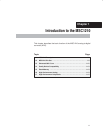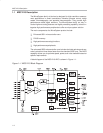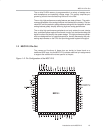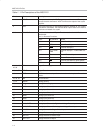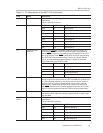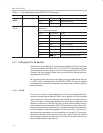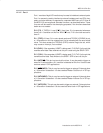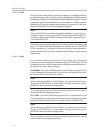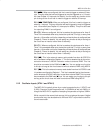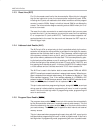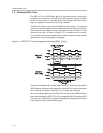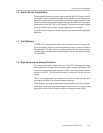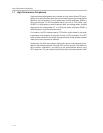
MSC1210 Pin-Out
1-8
1.2.1.3 Port 2
Like port 0, port 2 is dual-function. In some circuit designs, it is available for access-
ing external devices, while in others it is used to address external RAM or external
code memory. When more than 256 bytes of external RAM are used, port 2 is used
to output the high byte of the address that is to be accessed in a MOVX operation.
Whether port 2 is used to address external memory or as general I/O lines is de-
fined by the EGP23 bit in hardware configuration Register 1.
Note:
When the EGP23 bit of hardware configuration Register 1 is set, Port 2 as-
sumes the value of the high byte of DPTR when using the MOVX @DPTR
instruction. When using the MOVX @Rx instructions, port 2 assumes the val-
ue of the MPAGE SFR.
If the circuit requires external code memory, the microcontroller automatically uses
port 2 I/O lines to access each instruction to be executed, but only if bit EGP23
of HCR1 equals one. In this case, port 2 cannot be used for other purposes be-
cause the state of the I/O lines are constantly being modified to access external
code memory.
1.2.1.4 Port 3
Port 3 consists entirely of dual-function I/O lines. While you can access all
these lines from the software by reading/writing to the P3 SFR, each pin has
a predefined function that the microcontroller handles automatically when con-
figured to do so and/or when necessary.
P3.0 (RxD0): The primary USART/serial port uses P3.0 as the receive line. For
in-circuit designs that are using the microcontroller internal serial port, this is
the line into which the serial data is clocked.
Note:
When interfacing an 8052 to an RS-232 port, you cannot connect this line
directly to the RS-232 pin; you must pass it through a part such as the
MAX233 to obtain the correct voltage levels.
You can assign any function to this pin as long as the circuit has no need to
receive data via the integrated serial port.
P3.1 (TxD0): The primary USART/serial port uses P3.1 as the transmit line. For
in-circuit designs that is using the microcontroller internal serial port, this is the line
used by the microcontroller to clock out all data written to the SBUF SFR.
Note:
When interfacing an 8052 to an RS-232 port, you cannot connect this line
directly to the RS-232 pin; you must pass it through a part such as the
MAX233 to obtain the correct voltage levels.
You can assign any function to this pin as long as the circuit has no need to
transmit data via the integrated serial port.




